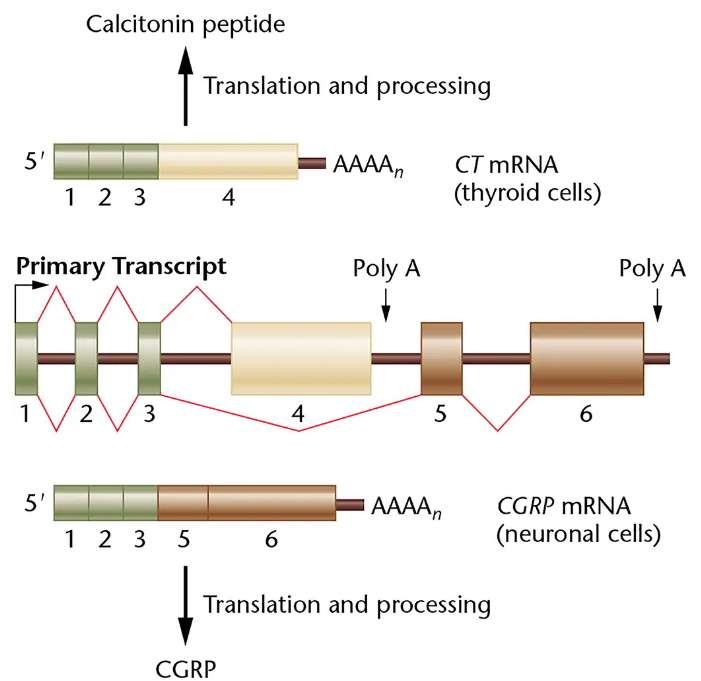Here are the essential concepts you must grasp in order to answer the question correctly.
Alternative Splicing
Alternative splicing is a process during gene expression where a single pre-mRNA transcript can be spliced in multiple ways to produce different mature mRNA variants. This allows one gene to encode multiple protein isoforms, increasing proteomic diversity without increasing gene number.
Recommended video:
Types of Alternative Splicing Patterns
There are several common patterns of alternative splicing, including exon skipping, mutually exclusive exons, alternative 5' splice sites, alternative 3' splice sites, and intron retention. Each pattern alters the mRNA sequence differently, affecting the resulting protein structure and function.
Recommended video:
CT/CGRP Gene Example
The CT/CGRP gene is a classic example illustrating alternative splicing, where different splicing patterns produce either calcitonin (CT) or calcitonin gene-related peptide (CGRP). Understanding this example helps clarify how alternative splicing can regulate tissue-specific protein expression.
Recommended video:

 Verified step by step guidance
Verified step by step guidance Verified video answer for a similar problem:
Verified video answer for a similar problem:

